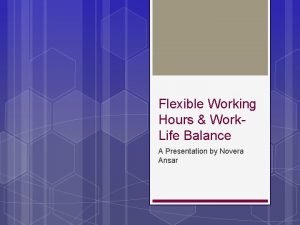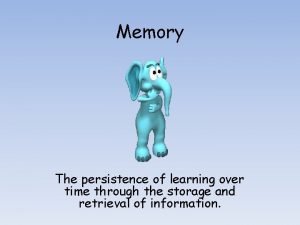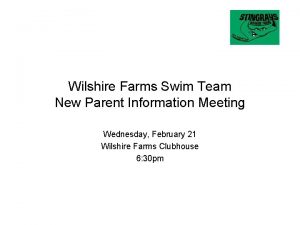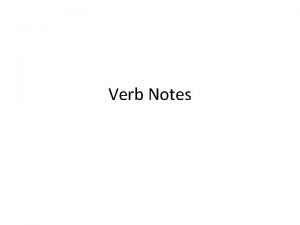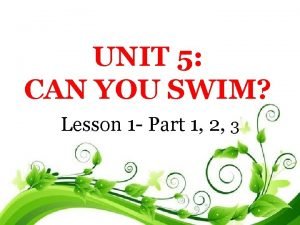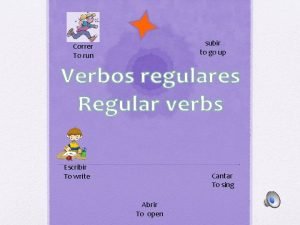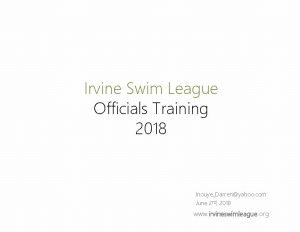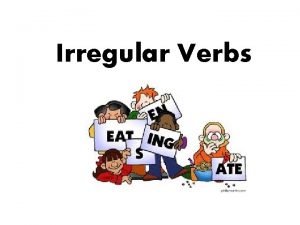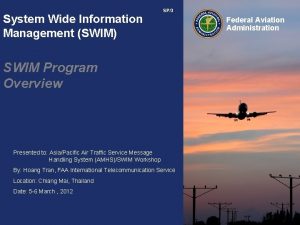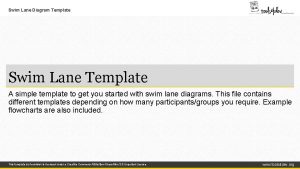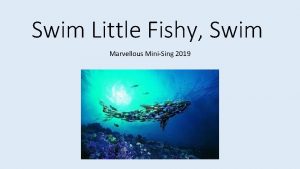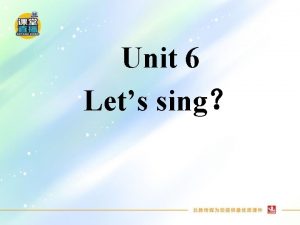WORKING RELATIONSHIPS A short presentation to Swim Ontario



























- Slides: 27

WORKING RELATIONSHIPS A short presentation to Swim Ontario September 2009

THREE TYPES OF RELATIONSHIPS üEmployee üContractor üVolunteer

HOW THE LAW SEES THEM üEmployee and volunteer are very similar (in terms of authority, control, liability, “master-servant” relationship) üThe only difference is that the volunteer is not paid üContractor is entirely different

WHAT LAW GOVERNS üEmployee governed by employment law üContractor governed by contract law

EMPLOYEE v. CONTRACTOR DIFFERENCES üLiability üEmployer is vicariously liable for employees and volunteers, while contractor is personally liable üTaxes, benefits, pensions üEmployer deducts taxes and contributes to employment benefits, paid holidays, sick days, income security üTermination üEmployer must give notice unless for cause, contractor typically requires no notice

ADVANTAGES FOR EMPLOYEE üStable pay with no risk of üReasonable notice to loss üPaid holidays, lieu days and sick pay üStatutory protection (Employment Standards Act) üVicarious liability of employer üSkills training terminate üTax deducted at source and submitted for you üPay into Employment Insurance scheme üEmployer contributes to EI, CPP üOther employment benefits provided

DISADVANTAGES FOR EMPLOYER üExpensive (about 20 percent higher due to statutory obligations) üLess flexibility in staffing üVicarious liability üEmployer liability (termination, severance, other statutory requirements, administrative burden) üNeed to supervise/direct

EMPLOYMENT RELATIONSHIP ü‘Employment Standards Legislation’ (absolute minimums) üPersonnel policy of organization (beyond the minimums) üIndividual employment contracts* (beyond the personnel policies)

CONTRACTOR RELATIONSHIP üThe ‘Contract’ üContract law and language

EMPLOYEE or CONTRACTOR üControl test (the worker’s independence) üIntegration test (are worker’s tasks integral to organization’s day-to-day business) üEconomic reality test (control over work, ownership of tools, financial risk) üSpecific result test (is work time-specific or ongoing)

EMPLOYEE or CONTRACTOR No single test determines employment status, rather the tests are used in combination and are applied to the circumstances of each individual case. The purpose of the tests is to draw attention to the true nature of the relationship.

Moose Jaw Kinsmen Flying Fins v. Minister of National Revenue Federal Court of Canada, 1988

FLYING FINS … üSwimming instruction and training is integral to the business and the sole reason for the existence of the business üCoach required to comply with bylaws and all rules üRequired to be available during the hours set by the Club üCould be dismissed for misconduct üCoach incurred no expenses, supplied no facilities, took no business risks

FLYING FINS … üAny financial gain or loss resulting from the Club’s operations fell to the Club, not coach üCertain degree of control was exercised by the Club üCoach required to supply personal services to the Club – could not substitute the services of others for his own üCanada Revenue Agency determined that the coach was an employee and not a contractor

Puri v. Minister of National Revenue, 1998 Whistler Mountain Ski Club v. Minister of National Revenue, 1996

THE PERILS OF GETTING IT WRONG üTaxes have to be paid retroactively üEmployer and employee have to pay out EI and CPP contributions üEmployee must pay more taxes because of improperlyclaimed expenses üDirectors may be personally liable üFines and penalties may be imposed on both employer and employee

MANAGING THIS RISK For the business: üStructure the relationship to be one of true contractor üAsk contractor to provide an indemnity üOr, play it safe and establish employment relationship

INDEMNITY ü‘The consultant is deemed to be an independent contractor and is not entitled to receive any of the benefits normally associated with an employment relationship. üThe consultant will indemnify the association for any and all costs it might incur should the relationship be deemed to be one of employment. üThis indemnification survives termination of this agreement. ’

TERMINATION/DISMISSAL üContractor – no requirements üEmployee – many requirements with cause without cause constructive dismissal

DISMISSAL WITH CAUSE üNo notice is required üSee legislation for definition (“willful misconduct or disobedience, or willful neglect of duty that is not condoned by the employer”) üMust issue warnings specific to termination üMust show progressive discipline and a paper trail üWhat is sufficient depends on circumstances of each case

DISMISSAL WITHOUT CAUSE üCan terminate at any time provided that notice, or pay in lieu of notice is given üLegislation states minimum (one pay period) üMay be modified by personnel policy üMay be modified by employment contract üWhat is ‘reasonable notice’ at common law? (this will be more than legislation, which is minimum notice)

CONSTRUCTIVE DISMISSAL üUnilateral and fundamental change to the employment relationship (it must be “substantially altered”) üExamples: less responsibility, significant change in duties, change in policy, new location of work, loss of status üNotice is required if constructive dismissal is proven

EMPLOYMENT CONTRACT üDescription of job duties üTerm of agreement üCompensation, benefits, holidays üSupervisory relationship üPerformance appraisal üTermination and severance üConfidentiality üLink to personnel policies (if applicable) üGeneralities

CONTRACTOR AGREEMENT üDeliverables üTerm of agreement üCompensation üReporting relationship üTermination üRisk, indemnification, insurance üGeneralities

CONFIDENTIALITY üApplies to both employees and contractors üApplies to trade secrets, inventions, customer data, pricing/sales strategies, financial information, business and marketing plans, technical product specifications, correspondence, personal information within scope of privacy laws üIn sport additional concerns relating to athlete health and drug information

PROPERTY RIGHTS üIntellectual property created by an employee belongs to the employer üIntellectual property created by a contractor belongs to the contractor üContracts need to include provisions to deal with ownership of intellectual property

www. sportlaw. ca ü‘Writings’ section üHandbooks and books üSubscribe to our newsletter üSteve’s telephone number.
 Tall+short h
Tall+short h Hard work vs smart work
Hard work vs smart work Hot working vs cold working
Hot working vs cold working Hot working and cold working difference
Hot working and cold working difference Differentiate between hot working and cold working
Differentiate between hot working and cold working Proses hot working
Proses hot working Work life balance training ppt
Work life balance training ppt If the actual royalty exceeds minimum rent
If the actual royalty exceeds minimum rent What is the persistence of learning over time
What is the persistence of learning over time 5cm labor
5cm labor Cephalic presentation
Cephalic presentation Wilshire farms clubhouse
Wilshire farms clubhouse Grant ranch barracudas
Grant ranch barracudas Chad b swim helping verbs
Chad b swim helping verbs Unit 5 can you swim
Unit 5 can you swim East severna park swim league
East severna park swim league Subirto
Subirto Present continuous negative form
Present continuous negative form Run past tense
Run past tense Msa swim madison al
Msa swim madison al All fish can swim postulate
All fish can swim postulate Irvine swim league
Irvine swim league Miss irregular verb
Miss irregular verb Irregular verbs blow
Irregular verbs blow Aviation system block upgrades
Aviation system block upgrades Heritage park seals
Heritage park seals Eau swim
Eau swim Forsyth central swim and dive
Forsyth central swim and dive






